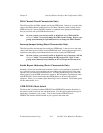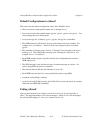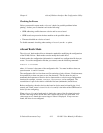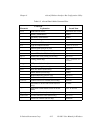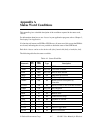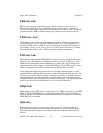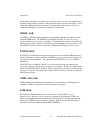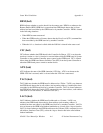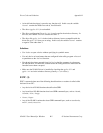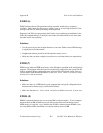Status Word Conditions Appendix A
NI-488.2 User Manual for Windows A-4 © National Instruments Corp.
REM (brd)
REM indicates whether or not the board is in the remote state. REM is set whenever the
Remote Enable (REN) GPIB line is asserted and the GPIB board detects that its listen
address has been sent either by the GPIB board or by another Controller. REM is cleared
in the following situations:
• When REN becomes unasserted
• When the GPIB board as a Listener detects that the Go to Local (GTL) command has
been sent either by the GPIB board or by another Controller
• When the ibloc function is called while the LOK bit is cleared in the status word
CIC (brd)
CIC indicates whether the GPIB board is the Controller-In-Charge. CIC is set when the
SendIFC routine or ibsic function is executed either while the GPIB board is System
Controller or when another Controller passes control to the GPIB board. CIC is cleared
either when the GPIB board detects Interface Clear (IFC) from the System Controller or
when the GPIB board passes control to another device.
ATN (brd)
ATN indicates the state of the GPIB Attention (ATN) line. ATN is set whenever the
GPIB ATN line is asserted, and it is cleared when the ATN line is unasserted.
TACS (brd)
TACS indicates whether the GPIB board is addressed as a Talker. TACS is set whenever
the GPIB board detects that its talk address (and secondary address, if enabled) has been
sent either by the GPIB board itself or by another Controller. TACS is cleared whenever
the GPIB board detects the Untalk (UNT) command, its own listen address, a talk address
other than its own talk address, or Interface Clear (IFC).
LACS (brd)
LACS indicates whether the GPIB board is addressed as a Listener. LACS is set
whenever the GPIB board detects that its listen address (and secondary address, if
enabled) has been sent either by the GPIB board itself or by another Controller. LACS is
also set whenever the GPIB board shadow handshakes as a result of the ibgts function.
LACS is cleared whenever the GPIB board detects the Unlisten (UNL) command, its own
talk address, Interface Clear (IFC), or that the ibgts function has been called without
shadow handshake.



